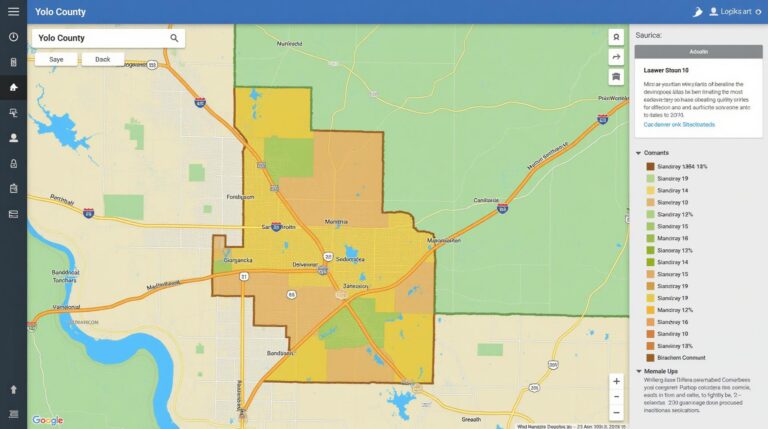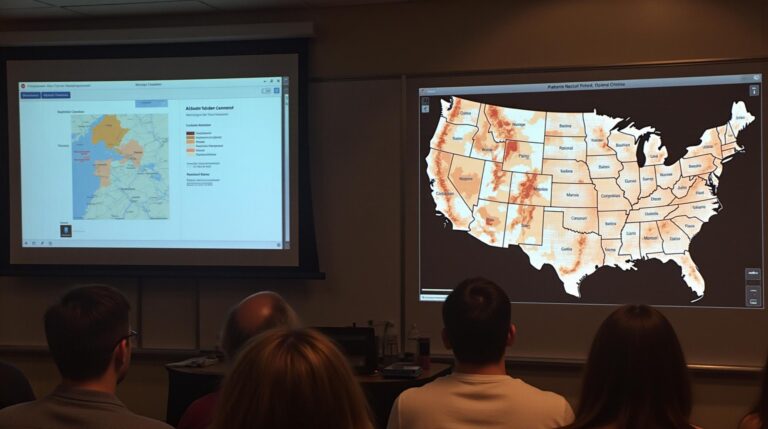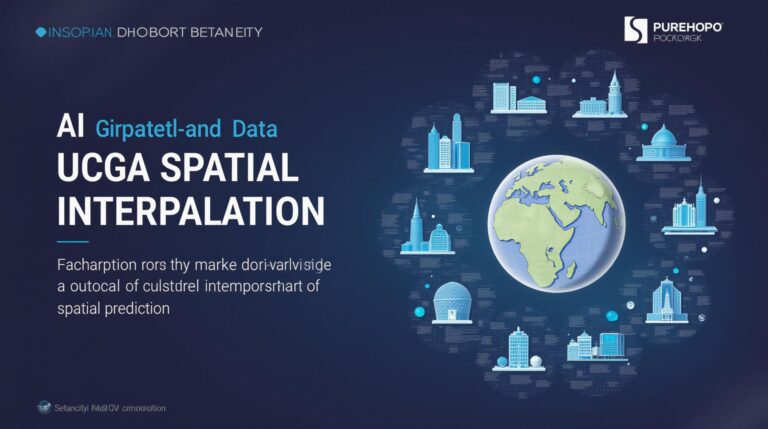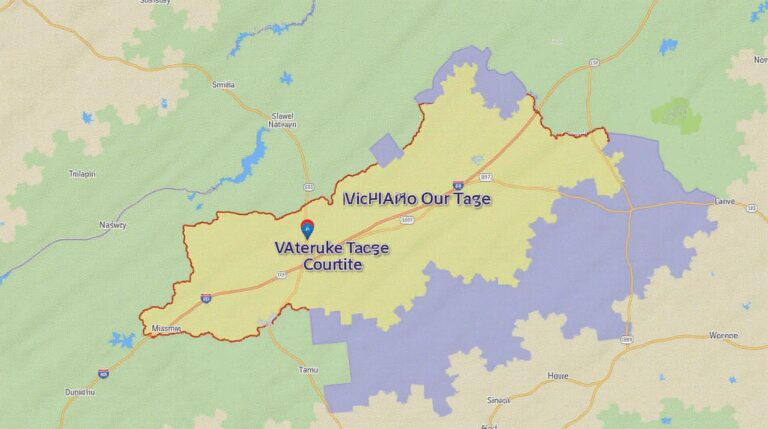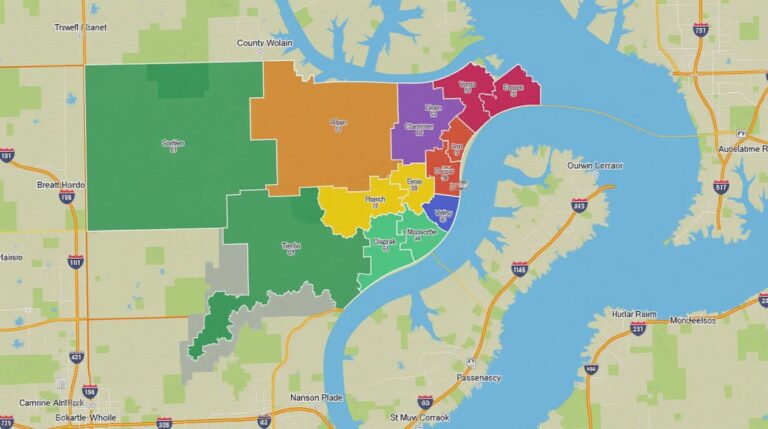AI for Geospatial Data Validation – Error Detection
AI for Geospatial Data Validation – Error Detection
In today’s data-driven world, geospatial data plays a crucial role in various sectors, from environmental monitoring to urban planning. However, inherent uncertainties and inconsistencies in real-world data often lead to significant challenges in understanding its accuracy and reliability. Enter artificial intelligence (AI), specifically AI models for Geospatial Data Validation – Error Detection, promising efficient solutions to this problem. This post explores how AI-powered techniques are revolutionizing how we identify and correct errors in geospatial data.
What is Geospatial Data?
Geospatial data sits atop the globe, discussing relationships mankind has with real-world information. It encompasses spatial and attribute data, such as geographic location, elevation, climate data, population distribution, and more.
Imagine a GIS database painstakingly analyzing a satellite image of a flood risk map. This flood risk management system directly relies on visualizing truth-shaped lines, and it’s easily realigned with a successful AI analysis that reveals overlooked dangers and facilitates more efficient strategies.
Why is Error Detection Important?
Accurate and reliable geospatial data is fundamental for informed decision-making. Incorrect data can lead to flawed analysis, inaccurate predictions, biased projections, and ultimately harmful consequences. Detecting and correcting errors is crucial to ensure the utility and trustworthiness of geospatial data used across various applications.
How can AI Help?
AI offers invaluable capabilities for effectively identifying and rectifying errors within geospatial datasets. This includes:
* **Image Analysis:** AI algorithms are particularly suited for analyzing satellite imagery, aerial photos, and geographic information like LiDAR data. These algorithms can detect discrepancies in features like buildings, landscapes, roads, and water bodies, revealing anomalies missed by conventional manual inspection.
* **Pattern Recognition:** Sophisticated algorithms can learn from vast amounts of geospatial data and discern patterns indicative of errors. For instance, unusual pattern analysis can unveil spatial discrepancies suggesting land cover mismatches.
* **Statistical Analysis:** AI can perform sophisticated statistical modeling to identify outliers, variations, and inconsistencies in geospatial data which might indicate potential errors.
* **Verification and Validation:** AI comparative systems can meticulously verify data against established ground truth and compare and contrast feature placements against reference features to pinpoint changes in scale, shape, and composition.
Benefits of Using AI for Geospatial Data Validation
Integrating AI for error detection offers a multitude of benefits:
- **Improved Accuracy:** AI models enhance the quality and accuracy of geospatial data analysis.
- **Effective Time Efficiency:** AI can significantly streamline the error detection process, making it more efficient and reducing manual labor.
- **Optimized Resources:** By identifying and correcting errors, AI can indirectly improve the effectiveness of resource allocation in various sectors.
- **Greater Understanding of Spatial Patterns:** AI can unveil hidden spatial patterns that might not be apparent through traditional methods.
- Geoai-error-detection is available on the TechGeo platform.
- Geographic features: Point, Line, Polygon Data Upload .
- Textual data: CSV, TXT, JSON File Upload.
- Deploy it as a standalone service GeoAI-error-detection
- Integrate it into existing workflows
- / utilize specific workflows Workflows
- Increased accuracy of geographic data
- Reduced manual processing of geospatial data
- Improved decision-making based on reliable geospatial insights
Practical Applications of Geospatial Data Validation using AI
AI for geospatial data validation is finding transformative application in:
* **Disaster Relief:** AI can accurately locate and classify damage in real-time, helping emergency response teams prioritize relief efforts and respond to emergencies more effectively.
* **Environmental Monitoring:** AI-powered systems can detect and classify illegal deforestation, pollution patterns, and other environmental stressors, facilitating proactive conservation and management efforts.
* **Urban Planning:** AI aids in analyzing large datasets to optimize infrastructure designs, improving traffic flow, reducing energy consumption, and promoting sustainable urban development.
* **Agricultural Management:** AI enables accurate crop and land mapping, enabling farmers to optimize irrigation, reduce fertilizer consumption, and automate agricultural activities for higher yields and sustainability.
* **Real Estate and Market Analysis:** AI contributes to more assured property evaluation, flood risk assessments, and fraud detection within the real estate industry.
Key Resources for Learning More
Hearing more about how AI models are used to ground truth, investigate, and verify geospatial data? Check out these resources:
Keep learning and exploring the boundless potential of AI in geospatial data analysis and validation!
Check similar topics:
Frequently Asked Questions
Here are some frequently asked questions about geoai-error-detection:
Availability
Formats
Geoai-error-detection supports a variety of formats, including:
Usage
GeoAI-error-detection integrates seamlessly with other GeoTech applications. You can:
Benefits
GeoAI-error-detection offers inherent benefits:
Conclusion
GeoAI-error-detection revolutionizes geoinformatics by radically improving the accuracy and robustness. Data errors can significantly impact the accuracy and reliability of insights derived from geographic information. Effective management of geoAI-error-detection is critical for ensuring the reliability and correctness of your geo-based actions. It directly contributes to more informed political decisions, improved resource allocation, trade and transportation optimization, as well as effective disaster management. Actionable insights depend on the trustworthiness and accuracy of your data, and GeoAI-error-detection is a critical step toward achieving that.


